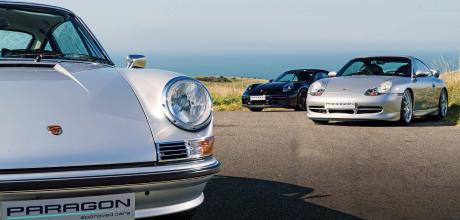Porsche 911 at 60: 2.4S v 996 GT3 v 992 GTS
Eight generations, countless m models and an unending commitment to sports car evolution. Total 911 celebrates the Neunelfer’s milestone anniversary by picking three cars that represent key moments in its 60 brilliant years.
Written by Kyle Fortune
Photography by Alisdair Cusick
CELEBRATING SIX DECADES OF THE WORLD’S MOST ICONIC SPORTS CAR WITH THE PEOPLE AND MODELS THAT MADE IT GREAT
911 at 60: the storytellers
Total 911 samples three key cars crucial to the Neunelfer’s amazing six decade-long story, in the form of the 2.4S, 996 GT3 and 992 GTS
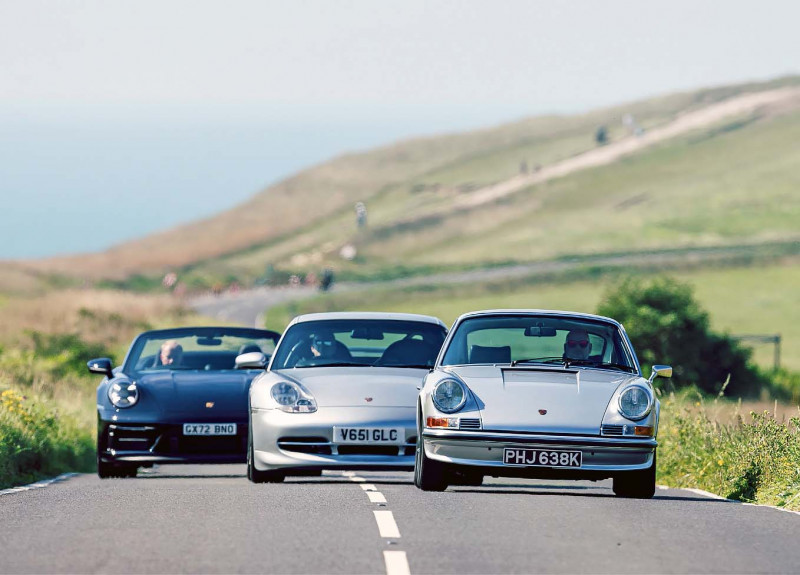
How to celebrate a significant birthday? That’s always a difficult one and with the Porsche 911 it’s even more tricky. With over 1.2 million sold – the significant majority of which are owned by an army of informed, devoted enthusiasts – Total 911 knows it’s impossible to please everyone. Gather an example of every year for a 60-car photoshoot? However fantastic such a prospect might be, the logistics and expense would be so formidable that it’d break us… and this magazine.

One of every generation was considered, but that took us down a rabbit hole: which model within each would best represent it? Porsche itself has done so recently, too, and it’s all a bit predictable. So how did the collective editorial minds here at Total 911 arrive at the conclusion you’re looking at here? By following something of a guiding principle of Porsche itself – we decided to keep it simple. A manageable three cars were selected, with each one expansive enough to exemplify one of the three themes we’re exploring with the 60 years of the 911’s existence: genesis, revolution and the present.

You’ll be entirely right to disagree with our choices. Realistically, you could pick any year in the six decades the 911’s been around and come up with reasoning why an alternative model does what we’re highlighting in this feature. One of the many fantastic things about the 911 is exactly that: there’s something for everyone. Furthermore, there’s no such thing as a bad one, just degrees of good or brilliance, depending on your conviction for your preferred 911.
“Like its predecessors, it’s been created in a way that means in 10, 20, 30 or more years’ time it’ll still deliver a scintillating drive, in a manner only a 911 can”
True genesis was six decades ago, when in September 1963 Porsche revealed the 901 at the Frankfurt International Motor Show. Nobody could have then predicted that the 911, as it would quickly be renamed after Peugeot cried ownership on three-number, middle-zero combinations, would become an automotive icon. Its enduring success is genuinely remarkable. Even more so when you consider that even back then, its layout – with the rear-mounted, flat six engine – was an engineering anachronism. Yet its unusual configuration differentiates the 911, creating something unique in the process. Porsche’s steadfast retention of the rear-mounted engine is advantageous in relation to interior packaging, as well as traction, and it defines how the 911 drives, from 1963 right up to today. It also exemplifies Porsche’s self-belief, engineering prowess and stubbornness. With every 911 model the company has refined that imperfect layout, reducing the compromises and retaining the advantages. Sensibly, it’s done this while not diluting the character that makes a 911 such an appealing driver’s car. When it arrived, that flat six was just 2.0-litres and developed 130hp, and it found a home in a body penned by Ferdinand Porsche.
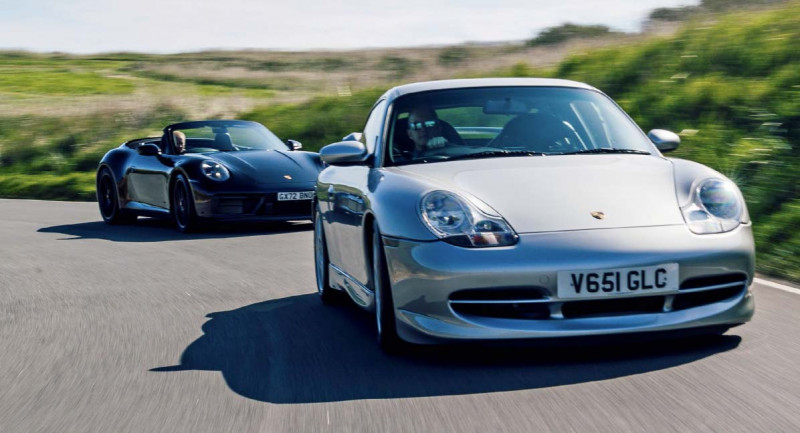
The 911’s form, as much as the technical layout, is instantly recognisable and has been retained (albeit larger and wider) to this day.
“The early 1970s would exemplify Porsche’s rapid development and model proliferation with the 911”
Porsche would, as it had previously done so with the 356 and continues to date, prove the 911’s mettle via competition. The company entered a 911 in the Monte Carlo rally in 1965 with Herbert Linge driving and Peter Falk (remember the name) as co-driver, with the 2.0 911 taking the class win and a remarkable fifth overall in the famous rally. Competition on road, track and rallying would be – and still is – a means for Porsche to constantly improving the 911. Racing has contributed to its development as a road car, but also made it the world’s most successful competition car.
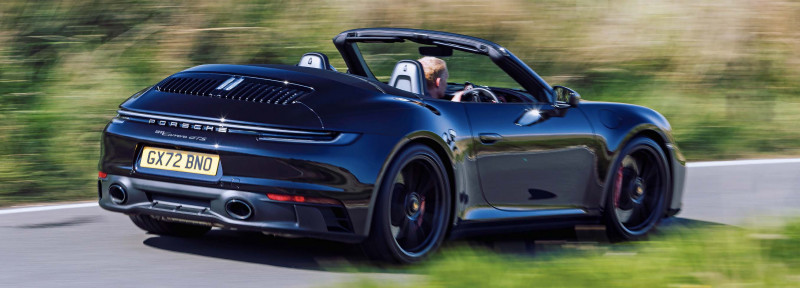
Porsche has embraced that fully, with the 911’s nomenclature inextricably linked with competition. Carrera is ‘race’ in Spanish and relates to Porsche’s competition in the Carrera Panamericana in Mexico, while RS signifies rennsport or ‘racing’ in German. Targa celebrates Porsche’s success in the Targa Florio endurance race and GT3 is a racing category, with competition homologation rules also dictating entire model series. It’s most obvious with that GT3 and RSs, but it’s less well-known that the original 930 Turbo is the result of Porsche having to create a turbocharged road car to enable it to race its 934 and later 935s in endurance racing.
“Revolution… the 996’s significance in the 911’s timeline cannot, and should never be, underestimated”
Here, genesis is represented by a 1972 Porsche 911 2.4S. It’s late in the original 911’s life – just two years prior to the G-Series replacing it – but it underlines Porsche’s continual process of enhancing and finessing that 1963 original. In just nine years the engine’s capacity had grown from 2.0 to 2.4-litres, with power in this 1972 S reaching 190hp. That’s a not-insignificant 60hp increase on the 2.0-litre car which introduced the 911. The early 1970s would exemplify Porsche’s rapid development and model proliferation with the 911. The 2.4 swelled again to 2.7-litres for the RS and subsequent G-Series Carreras, with those impact bumper cars increasing in capacity to 3.0, 3.2 with natural aspiration and initially 3.0-litres with a turbocharger. Eventually, capacity reached 3.3-litres in the final iteration of the Turbo.
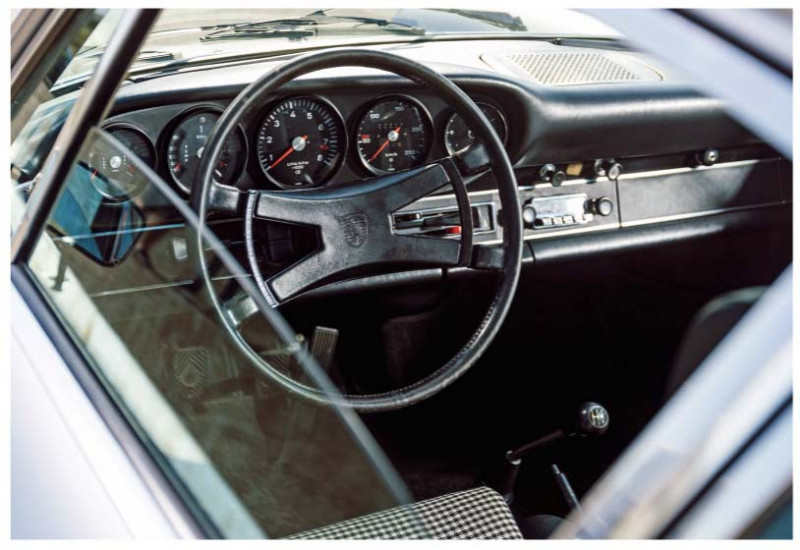
That 190hp feels ample here. The 2.4 S’s performance is such that it’s not humbled even in the company of its much newer relations. It’s brisk up to 4,000rpm, but there’s a notable gain in urgency above that. The 2.4 S’s 6.6 second 0-62mph time is equivalent with something like a Golf GTI today, so it’s still very fast. All of which makes it genuinely difficult to comprehend how outrageous it must have felt surrounded by contemporary, significantly slower traffic. It’s immediately familiar (even with left-hand drive). The 911 cockpit – with the upright windscreen, slim window pillars, small pews in the rear and the five dials ahead, the pedal layout, simple controls and the ease of the gearshift – feels fantastic.
Tight, precise and effortless, too, the 2.4S is a car that’s fully at ease in modern traffic. It’s lively and brilliantly engaging, full of feel, with braking performance to match its prodigious acceleration. This example, like its companions, has been borrowed from the good people at Paragon and we’re very grateful for the loan.
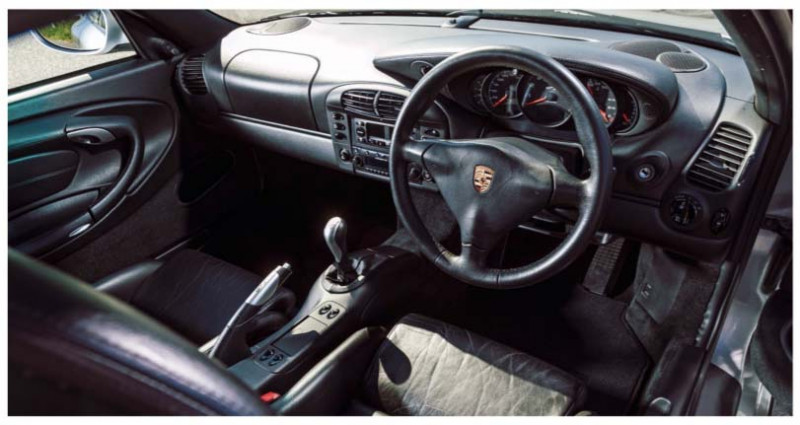
If I didn’t drive another car for our shoot today I wouldn’t complain. The 2.4S is sensational. It flows down the road with a supple but taut control, allied with the sort of detailed feel that makes it an absolute joy to be behind the wheel, whatever the speed. The 2.4S wasn’t the car I drove to the location for this shoot, though. That was the 996 GT3. Revolution, or revulsion for some, here the 996’s significance in the 911’s timeline cannot and should never be underestimated. Admittedly, it’s a sizeable leap from that 2.4S, with 25 years separating them. Yes, we can hear and understand the calls for the 3.2 Carrera, 964 and 993, but this is our party so stick with us.
Those air-cooled predecessors aren’t without oodles of merit. The 964’s introduction brought four-wheel drive, the 3.6-litre engine and the return of the RS badge after a lengthy hiatus. The 993 would build on that modernised status of the 964, but go further still. The most sophisticated of the air-cooled cars added a sixth gear and VarioRam, and set the Turbo on a new, four-wheel-driven path. Almost to appease those wanting a madcap turbo as much as homologation rules, it introduced the GT2 to the world. The 993 also introduced the civilising Weissach rear axle to create the most capable 911 yet. The man who would steer the pre-development and development of the 993’s chassis, and do the same with the 996, would be Peter Falk, he of codriver status of the 911’s first Monte Carlo outing in 1965. Peter’s certainly not alone in being part of the Porsche legend, but he’s demonstrative to the fact that the company attracts the very best engineers who, crucially, stay with the brand.

That commitment is instrumental in the continued and successful development of the 911. Indeed, no other company celebrates its engineers so much – and rightly so – with names like Herbert Linge, Helmuth Bott, Roland Kussmaul, August Achleitner, Hans Mezger, Frank-Steffen Walliser and Andreas Preuninger among many others rightfully revered as custodians of the 911 line, their names known and respected by those afflicted by the 911 addiction. The 996 would be in good hands. This GT3 was not, as every GT3 since has been, the work of Andreas Preuninger, but a car attributed to Roland Kussmaul. The standard 996 Carrera was always going to have a tough job convincing the die-hard, traditional 911 fans as the most significant overhaul – technically and stylistically – since that original in 1963.
Getting in it to drive to the photoshoot, it feels right-sized, compact and wieldy, with the embrace from the ‘elephant ear’ bucket seats adding to the connection. There are five dials ahead, the rev-counter top and centre, as it should be, with the Mezger engine it’s linked to being the stuff of legend. The 996 was necessary and while it still has its detractors, its sales success along with its Boxster relation bankrolled Porsche prior to the introduction of the oft-cited Porsche saviour, the Cayenne. Indeed, the 996’s effect was so significant on the company’s coffers that it also enabled it to produce the Carrera GT.
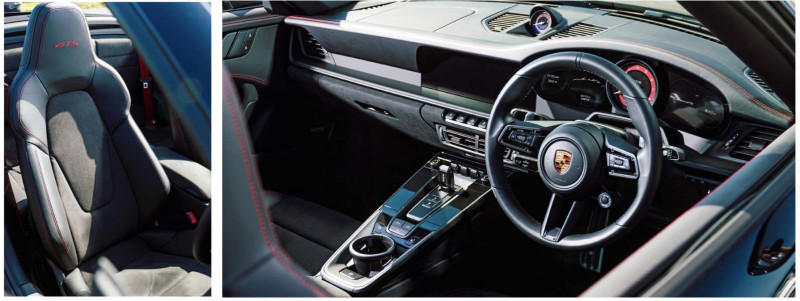
Until the 996 arrived, Porsche sold around 410,000 911s over 34 years, but during the eight years the 996 was in company showrooms it added over 175,000 to that tally. Pinky Lai’s design might have upset some, but it certainly didn’t hurt sales, and if you really pore over the details, the 996’s flat-sided flanks takes 911 design back to basics. It’s reverential to the earliest cars by being simple, pure and compact. That’s true of the drive: standard Carreras were famously lighter than the 993 Carrera before it, as well as the GT3 here. I’ve never sat in a 996 and not thought how much I’d like one, with the passing of time undoing the unfair disservice and reputation that’s long been a detractor to many.
With 360hp being generated from that 3.6-litre Mezger flat six, the GT3’s wickedly quick. The whole experience is one of immediacy and intensity, and it’s achieved in a manner that’s in keeping with the GT part of its name. The ride’s composed, the dimensions feel right on the road and the gearshift is a delight. The parallels between it and the 2.4S are clear and hugely enjoyable. That I could drive this 2000, 55,000-mile example home from Paragon for £85,000 seems like sheer lunacy because – lack of rear seats aside – it’s all the 911 that I need. Or want. Engaging at ordinary speeds and fizzing at extraordinary ones, it’s a car of split, complementary personalities, with an operating window that really does encompass everything from daily driving to lap-time chasing.
The 996’s revolution would bring evolution in the guise of the 997 that followed. It continued and built on the 996’s sale success, adding more models to the mix and shaping the template that brings us, via the 991 (which would witness the 911 achieving its millionth example), right up to the present day. That’s represented here by the 992, a PDK GTS Cabriolet that to many might be considered the antithesis of the other two cars alongside it. Yet such is the expansive reach of the 911 today, it’s as relevant as any – arguably more so. The likelihood is that this generation 992 will be the last of the non-hybrid cars, as Porsche adapts the 911 to an electrifying future, which means history will likely judge it as a great. It’s bigger and more comfortable, of that there’s no question. The performance from the 480hp, 3.0-litre turbocharged flat six is truly other-worldly, its finesse on the road impeccable, and here the convertible adds a further dimension to the drive without diminishing its engagement and ability elsewhere.
The 992 is undoubtedly a car for today, with all the connectivity and configurability that modern life and customer expectation dictates. Yet like its predecessors, there’s also the knowledge it’s been created in a way that means in 10, 20, 30 or more years’ time it’ll still deliver a scintillating drive in a manner only a 911 can.
At 60 years, the 911 has matured and adapted to suit the zeitgeist. Porsche has achieved this by never losing sight of the fundamental elements that make the car so appealing. Cleverly, too. Its talented designers and engineers have evolved the brand to create an expansive range that enables you to pick exactly the 911 you desire. Today, the range is bookended at the extremes by cars like the GT3 RS and Dakar, with Cabriolets, Targas, Coupes, the Turbo/Turbo S, rear- or all-wheel drive, manual or PDK automatic offering a myriad of combinations in between. All are true 911s, just as all their predecessors are. Truly, the magic of Porsche’s sports car remains undiminished over its six decades and, arguably, is becoming ever more impressive.
LEFT Bringing our feature right up to date, the 992 GTS Cabriolet can achieve 0-62mph in 3.6 seconds and a top speed of 192mph.
BELOW The 992 presents a large influx of technology to the interior of the 911. It’s a long way from the simplicity of the long bonnet models.
ABOVE The 996 is the only 100% new 911 since the first 901 in 1963. Its Gen1 GT3 (above) started a new Motorsport department legacy.
THANKS The cars in our feature are available for purchase from Paragon Porsche. Visit paragongb.com


